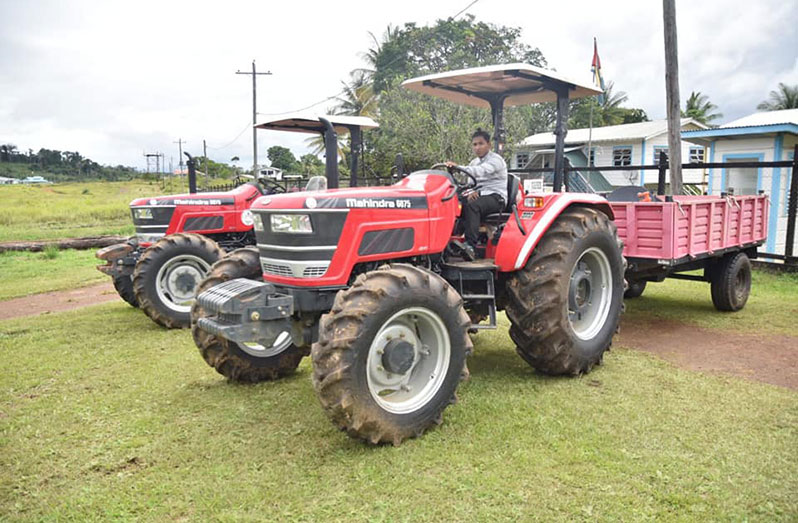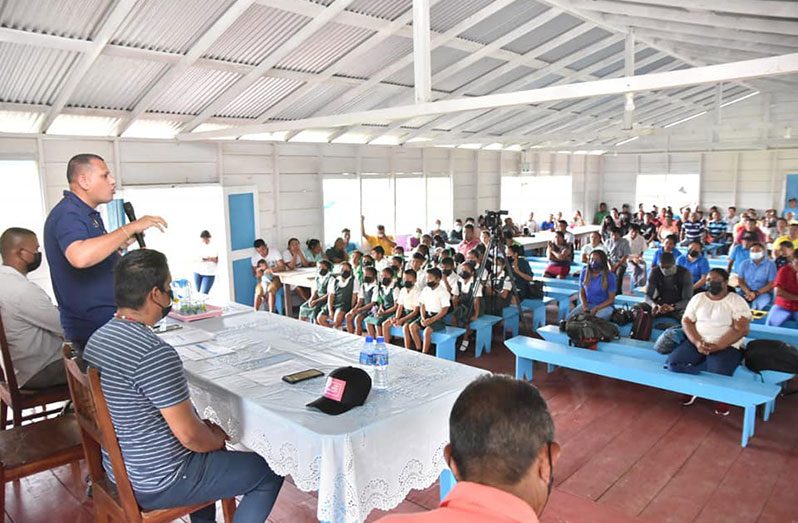–as GWI moves to drill new wells
RESIDENTS of Waramadong and Phillipai, Region Seven (Cuyuni-Mazaruni), will soon benefit from an enhanced supply of water as the Guyana Water Incorporated (GWI) moves to drill new wells in the hinterland communities.
As it is now, just about 50 per cent of the approximately 960 persons living at Waramadong benefit from potable water, while the over 1,400 residents at Phillipai depend on rainfall for their water supply.
Cognisant of this, Minister of Housing and Water Collin Croal said that both communities will benefit from new sources of water, through the Hinterland Water Supply Programme.

Minister Croal, while addressing residents of Waramadong during a recent visit to the community, said: “After the drilling of the well, we expect close to one hundred per cent of residents to receive potable water.”
He said the tendering process for both projects has commenced, as those are among the first set of water-supply enhancement initiatives in Budget 2022.
The new water systems, Minister Croal said, will each comprise a deep-water well, pipe networks and service connections, as well as a trestle and a photovoltaic pumping system.
GWI Director of Hinterland Services Ramchand Jailall said that residents of the communities at reference will also benefit from employment during the course of the projects.
Additionally, at least two Community Service Officers (CSOs) will be trained in water system management, so as to assist the GWI with surveillance of the new systems.
Meanwhile, on Monday, two tractors and trailers were presented to Kamarang and Waramadong by Minister Croal, on behalf of the Ministry of Amerindian Affairs.
The equipment will be used to advance agriculture development in both communities, as well as to transport goods and aid in the provision of other services.
Minister Croal urged the toshaos and councillors of both Waramadong and Phillipai to implement systems that will sustainably manage the equipment.
The tractor and accompanying trailer are valued at $5.8 million, while the communities each received a plough and harrow worth approximately $1 million.



.jpg)









